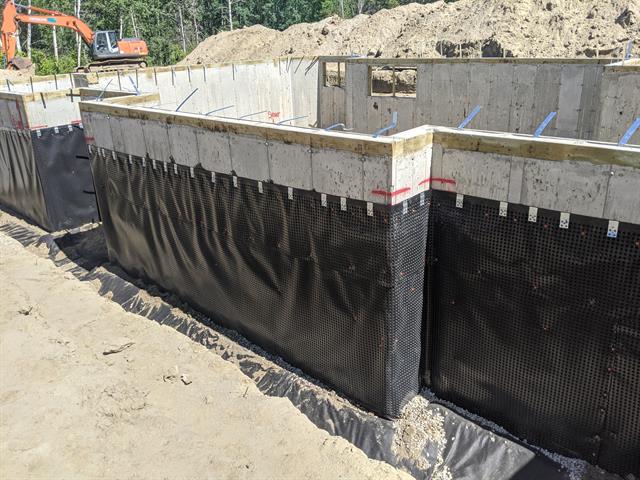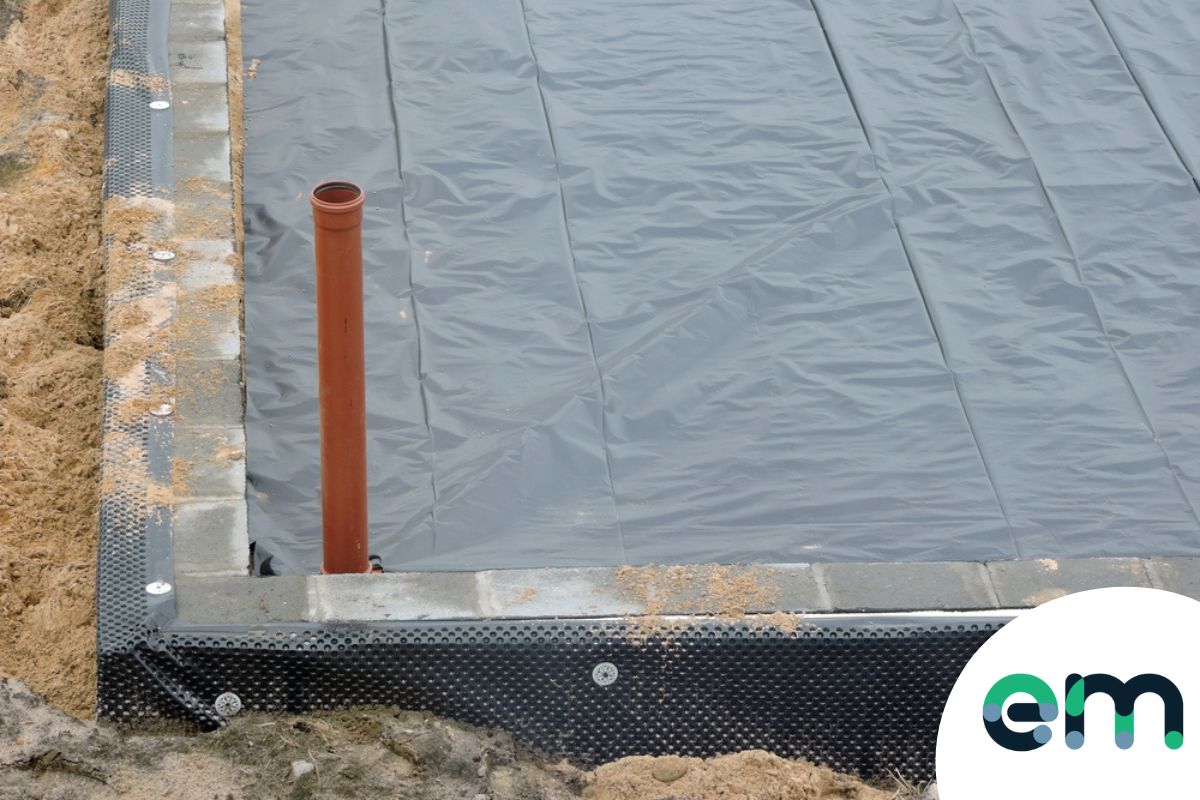How to recognize early indicators of rising damp: A must-read for landlords in damp proofing newcastle
How to recognize early indicators of rising damp: A must-read for landlords in damp proofing newcastle
Blog Article
Exploring the Different Strategies and Solutions for Effective Damp Proofing
Wetness in structures poses significant challenges to both structural honesty and interior air high quality. Numerous methods and remedies have emerged to battle this pervasive problem. From traditional damp-proof membranes to innovative chemical treatments, each technique offers unique benefits. Understanding these options is necessary for reliable dampness control. Nevertheless, selecting the right option relies on certain structure problems and requirements, triggering further exploration right into the most efficient damp proofing approaches readily available.
Recognizing the Root Causes Of Wetness
Although moisture can occur from numerous sources, recognizing these reasons is essential for reliable removal. Commonly, moisture stems from three primary sources: increasing damp, penetrating moist, and condensation. Rising damp takes place when groundwater takes a trip up with permeable materials, such as brick or stone, usually as a result of a lack of an efficient barrier (damp proofing newcastle). Permeating wet is usually triggered by exterior variables, including roof covering leaks, malfunctioning seamless gutters, or harmed wall surfaces, enabling water to penetrate a residential or commercial property. Condensation, on the various other hand, arises from excess dampness airborne, usually exacerbated by inadequate ventilation and temperature level distinctions, resulting in water beads forming on surfaces. Recognizing these underlying issues is vital, as each type of moisture calls for a tailored technique for removal. Proper analysis assists in figuring out the most effective services, eventually safeguarding the structural integrity of a structure and boosting indoor air high quality
Typical Damp-Proof Membrane Layers

Chemical Damp-Proofing Solutions
Chemical damp-proofing remedies supply an innovative strategy to stop wetness intrusion in structures. These techniques normally include the application of liquid chemicals that permeate stonework and create a barrier against increasing damp. Commonly made use of chemicals consist of silanes, siloxanes, and various other water-repellent agents that react with surface products to develop a hydrophobic layer.The application process usually needs drilling holes right into the wall surfaces, infusing the chemical option, and permitting it to heal. This approach is especially useful for older structures where conventional damp-proof membranes might be impractical. Moreover, chemical damp-proofing can be less turbulent and much more cost-effective than extensive restoration projects.While reliable, these remedies rely on correct application and ecological conditions for peak efficiency. Routine maintenance and surveillance are necessary to assure the longevity of the damp-proofing therapy. On the whole, chemical damp-proofing stands for a flexible alternative for protecting structures versus moisture-related damage
Cavity Wall Surface Building Techniques
Tooth cavity wall surface construction strategies use numerous benefits, especially in moisture control and power performance. By incorporating an air void in between two layers of masonry, these walls successfully minimize water ingress while improving insulation. This mix not just shields structures from wetness however additionally adds to minimized power intake.
Benefits of Dental Caries Wall Surfaces
When thinking about reliable wet proofing techniques, the advantages of cavity walls stand apart prominently. Dental caries walls contain two different layers, creating an air space that properly lowers moisture infiltration. This style reduces the threat of dampness, as the outer wall functions as an obstacle versus rainfall and water ingress. Furthermore, tooth cavity wall surfaces improve thermal insulation, which adds to energy performance by decreasing heat loss. They likewise supply sound insulation, helping to produce a quieter indoor environment. The air void allows for ventilation, which aids in wetness control and minimizes the likelihood of mold development. These benefits not only boost the overall comfort of a building however additionally add to its durability and structural stability.
Wetness Control Methods
Efficient moisture control techniques are crucial in tooth cavity wall construction to guarantee lasting security versus moisture. One primary approach entails the consolidation of weep openings, which help with water drain from the dental caries, protecting against buildup. Furthermore, using breathable membranes can aid manage dampness levels while allowing entraped vapor to run away. Appropriate positioning of insulation is additionally important, as it must not block drainage courses. Furthermore, ensuring that the outer leaves of the cavity wall are constructed with waterproof products enhances general resilience. Routine upkeep checks are important to determine any kind of clogs or damage early, safeguarding the structure's stability. Inevitably, a mix of these methods develops a robust protection versus moisture breach in tooth cavity walls.
Insulation and Energy Efficiency
Insulation plays a crucial duty in boosting energy effectiveness within tooth cavity wall construction. By integrating protecting products, these walls develop a thermal obstacle that decreases warm loss and decreases power usage. Efficient insulation not only aids keep a stable interior temperature level yet additionally minimizes the threat of moisture, as it stops condensation within the wall surface cavity. Various techniques, such as making use of rigid foam boards or mineral woollen, can be utilized to accomplish excellent insulation efficiency. Furthermore, proper setup is necessary to assure that voids and gaps are reduced, which can otherwise compromise power performance. Inevitably, a well-insulated cavity wall surface adds considerably to total sustainability and lowers cooling and heating expenses for property owners.
Exterior Damp Proofing Methods
Outside moist proofing methods are important for safeguarding frameworks from wetness infiltration. 2 efficient strategies include the application of water-proof membrane layers and the installment of French drains. These options aid reduce water build-up and maintain the honesty of buildings.
Waterproof Membrane Layer Application
While various methods exist for avoiding dampness ingress, the application of waterproof membrane layers stays a highly efficient external moist proofing technique. These membranes are typically made from products such as polyethylene, rubber, or modified bitumen, offering a durable barrier versus water infiltration. The installment process includes using the membrane to the outside surface areas of wall surfaces or foundations, ensuring total coverage to protect against leakages. Correct attachment and sealing at joints are important to maximizing efficiency. Water resistant membranes can be used in different kinds, consisting of liquid coverings and sheet membranes, permitting flexibility based on the specific requirements of the framework. This method not just secures buildings from moisture yet additionally boosts their longevity and architectural integrity.
French Drainpipe Installation
One efficient approach for managing groundwater and preventing dampness accumulation around a building's structure is the setup of a French drain. This drainage system consists of a trench loaded with gravel and a perforated pipeline that reroutes surface water away from the structure. Correct installment needs cautious preparation, making certain that the drain slopes far from the structure to facilitate optimal water circulation. In addition, the area of the drain is vital; it needs to be placed in locations susceptible to pooling or excess moisture. Routine maintenance, including clearing up debris from the crushed rock and making certain the pipeline stays unobstructed, is crucial for lasting efficiency. Inevitably, a well-installed French drainpipe can significantly reduce the danger of water-related concerns in basements and structures.
Inside Waterproofing Approaches
Interior waterproofing methods are vital for shielding a structure's interior from wetness seepage and potential water damages. These techniques generally involve the application of specialized materials and techniques developed to produce a dampness obstacle within the structure. One common technique is the usage of waterproof finishings or sealants on wall surfaces and floors, which protect against dampness from passing through surfaces.Additionally, mounting indoor drain systems, such as sump pumps, can properly manage water accumulation in cellars and creep rooms. An additional approach entails making use of vapor obstacles, which are mounted to hinder moisture motion from the ground into living spaces.Moreover, addressing any splits or gaps in walls or structures with appropriate sealants ensures a detailed defense against water breach. By applying these interior waterproofing strategies, building proprietors can greatly reduce the risk of mold and mildew growth, architectural damage, and various other moisture-related problems. Proper execution of these strategies is important for long-term security and structure stability.
Regular Maintenance and Inspection Practices
Routine upkeep and evaluation methods are crucial for assuring the long-term efficiency of wet proofing solutions in any building. Regular checks make it possible for residential or commercial property owners to determine very early indicators of dampness invasion, such as peeling paint, mold development, and stuffy smells. These signs can signify underlying concerns that require instant attention.Inspections should be performed at the very least annually, concentrating on vulnerable areas like cellars, crawl rooms, and outside walls. During these assessments, homeowner must take a look at sealers, drainage systems, and air flow to confirm they function correctly.Additionally, preserving gutters and downspouts is necessary, as clogged systems can result in water buildup near the foundation. Executing a regular upkeep schedule, together with prompt repair services, can considerably prolong the life expectancy of wet proofing procedures and secure the structural stability of the structure. Aggressive steps ultimately contribute to the total wellness and safety and security of the living environment.
Often Asked Inquiries
The Length Of Time Does Damp Proofing Commonly Last?
The duration of damp proofing performance differs, usually lasting between 20 to 50 years. Aspects such as application high quality, environmental conditions, and maintenance methods significantly influence the long life of the damp proofing therapy.

Can I Damp Proof My Home Myself?
The specific pondered the expediency of DIY damp proofing. With correct research and the best products, it is feasible. However, they also recognized the relevance of professional guidance to guarantee resilient performance and prevent future problems.
What Are the Indicators of Inefficient Damp Proofing?
Signs of inadequate moist proofing consist of relentless stuffy smells, visible mold growth, peeling off paint, wet patches on walls, and wood decay - mould treatment newcastle. House owners must resolve these issues without delay to stop additional damages and wellness concerns
Does Damp Proofing Affect Indoor Air High Quality?

Just How Much Does Professional Damp Proofing Expense?
Specialist wet proofing costs differ considerably, normally varying from $1,000 to $5,000 depending on the building's size, the degree of the damp issue, and selected methods. Each situation calls for a tailored evaluation for exact rates. Generally, dampness originates from 3 main sources: climbing wet, penetrating wet, and condensation. When considering reliable moist proofing techniques, the benefits of tooth cavity wall surfaces stand out plainly. Exterior moist proofing approaches are crucial for securing frameworks from dampness seepage. While various methods exist for stopping dampness ingress, the application of water resistant membranes continues to be an extremely effective external wet proofing strategy. Indicators of inadequate damp proofing include relentless stuffy smells, noticeable mold and mildew growth, peeling paint, damp patches on wall surfaces, and wood degeneration.
Report this page